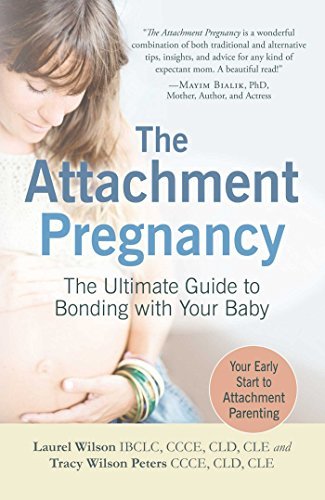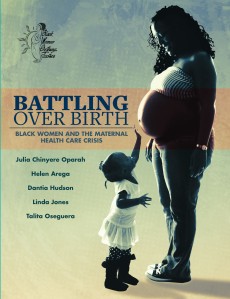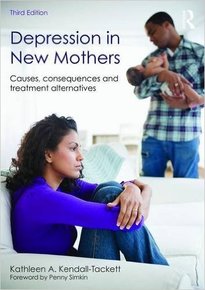In 2014, the World Health Organization called for an end to disrespect and abuse during childbirth.
Many women experience disrespectful and abusive treatment during childbirth in facilities worldwide. Such treatment not only violates the rights of women to respectful care, but can also threaten their rights to life, health, bodily integrity, and freedom from discrimination.
Disrespect and abuse
I look at policy statements and initiatives from many organizations with an interest in maternal/child or women’s health. This one particularly caught my eye because it acknowledges that the emotional care women receive during labor matters.

The statement did not address issues such as the high rates of cesarean birth or induction or other physiological aspects of labor and birth. It talked about “disrespect,” an experience that is much more subjective. The report acknowledges that in some cases the treatment women receive during birth constitutes abuse. It identifies disrespectful and abusive maternity care as a human rights issue that “may have direct adverse consequences for both the mother and infant.”
Here are some of the experiences they list as types of abuse women have experienced during childbirth:
- outright physical abuse
- profound humiliation and verbal abuse
- coercive or unconsented medical procedures
- lack of confidentiality
- gross violations of privacy
- neglect of life-threatening and avoidable complications
The groups WHO identified as most likely to experience disrespectful or abusive treatment are
- adolescents
- unmarried women
- women of low socioeconomic status
- women from ethnic minorities
- migrant women
- women living with HIV.
Reading this statement, you might think such treatment is confined to the developing world but unfortunately, abusive childbirth happens in the U.S. as well. For example, in the Listening to Mothers II survey, 9% of American mothers met the full criteria for posttraumatic stress disorder (PTSD), a condition more frequently associated with combat, natural disaster, or sexual assault (Beck, Gable, Sakala, & Declercq, 2011). An additional 18% had posttraumatic stress symptoms. Another study of U.S. mothers found that 46% of the mothers in their sample identified their births as “traumatic” using the definition set forth in the Diagnostic and Statistical Manual of Mental Disorders (DSM-IV) (Alcorn, O’Donovan, Patrick, Creedy, & Devilly, 2010).

In contrast, Sweden and the Netherlands have rates of full-criteria PTSD as low as 1.2–1.3% and only 9% of women in these samples described their births as traumatic (Soderquist, Wijma, Thorbert, & Wijma, 2009; Stramrood et al., 2011). Conversely, 54% of women in a sample from Iran described their births as traumatic and 20% met the full-criteria for PTSD. These findings clearly show that where you give birth makes a difference in the type of care you receive, and that the U.S. is behind many other countries in terms of quality of care.
Chilling findings
In a meta-ethnography of 10 qualitative studies, mothers described the disrespectful care they received (Elmir, Schmied, Wilkes, & Jackson, 2010). Their statements mirror many of the aspects of disrespectful births in the WHO statement described above. The mothers in this study described their care as dehumanizing and uncaring. They were more likely to describe their births negatively if they felt invisible and out of control. Some of the phrases the women used to describe their births were:
- barbaric
- intrusive
- horrific
- inhumane
- degrading
Women were also distressed when large numbers of people were invited to watch their births without their consent.
Women felt
- out of control
- powerless
- vulnerable
- and unable to make informed decisions about their care.
They felt betrayed. Some agreed to procedures, such as epidurals and vacuum extractions, in an attempt to end the trauma they were experiencing.
There is also evidence that some groups, such as African-Americans, may be more vulnerable to this type of care. As mentioned earlier, for the total sample of the Listening to Mothers II survey, 18% of women had symptoms of posttraumatic stress. When broken down by ethnicity, Black mothers had the highest rates (26%), compared to 14% of Hispanic mothers. These findings suggest that marginalized women may have an even worse experience of birth than women in the dominant culture. This difference in rates of trauma symptoms needs to be explored in future studies.
Breastfeeding

Highly stressful births can delay lactogenesis II (the initiation of copious milk secretion) by several days (Grajeda & Perez-Escamilla, 2002). Babies may end up with supplements or even back in the hospital, further traumatizing their mothers. A study from the U.K. revealed that women who had unplanned cesareans or forceps deliveries had the highest rates of depression and anxiety and the most breastfeeding difficulties (Rowlands & Redshaw, 2012). In Beck’s (2011) qualitative study of women who experienced birth trauma, breastfeeding could either exacerbate the trauma the mothers were experiencing—or help them heal. But the lactation care that many of the women in her sample received (e.g., grabbing their breasts or shoving babies on their breasts) further added to their trauma.
In summary, treating the mother well during labor has long-term health implications. Respectful care will make breastfeeding so much easier for mothers, babies, and even staff. Even though breastfeeding is not mentioned in the statement, if the concerns it raises are addressed, breastfeeding rates will improve. So will the mothers’ mental health, and that will make all the difference in both the mothers’ and babies’ quality of life.
Bottom line: birth matters.
Good births equal higher breastfeeding rates.
References

Alcorn, K. L., O’Donovan, A., Patrick, J. C., Creedy, D., & Devilly, G. J. (2010). A prospective longitudinal study of the prevalence of post-traumatic stress disorder resulting from childbirth events. Psychological Medicine, 40, 1849-1859.
Beck, C. T. (2011). A metaethnography of traumatic childbirth and its aftermath: Amplifying causal looping. Qualitative Health Research, 21. doi: 10.1177/1049732310390698
Beck, C. T., Gable, R. K., Sakala, C., & Declercq, E. R. (2011). Posttraumatic stress disorder in new mothers: Results from a two-stage U.S. national survey. Birth, 38(3), 216-227.
Elmir, R., Schmied, V., Wilkes, L., & Jackson, D. (2010). Women’s perceptions and experiences of a traumatic birth: A meta-ethnography. Journal of Advanced Nursing, 66(10), 2142-2153.

Grajeda, R., & Perez-Escamilla, R. (2002). Stress during labor and delivery is associated with delayed onset of lactation among urban Guatemalan women. Journal of Nutrition, 132, 3055-3060.
Rowlands, I. J., & Redshaw, M. (2012). Mode of birth and women’s psychological and physical wellbeing in the postnatal period. BMC Pregnancy and Childbirth, 12(138). doi: http://www.biomedcentral.com/1471-2393/12/138
Soderquist, I., Wijma, B., Thorbert, G., & Wijma, K. (2009). Risk factors in pregnancy for post-traumatic stress and depression after childbirth. British Journal of Obstetrics & Gynecology, 116, 672-680.
Stramrood, C. A., Paarlberg, K. M., Huis in ‘T Veld, E. M., Berger, L. W. A. R., Vingerhoets, A. J. J. M., Schultz, W. C. M.

W., & Van Pampus, M. G. (2011). Posttraumatic stress following childbirth in homelike- and hospital settings. Journal of Psychosomatic Obstetrics & Gynecology, 32(2), 88-97.
World Health Organization. (2014). The prevention and elimination of disrespect and abuse during facility-based childbirth.
Kathleen Kendall-Tackett, PhD, IBCLC, FAPA
 Dr. Kendall-Tackett is a health psychologist and International Board Certified Lactation Consultant, and the owner and Editor-in-Chief of Praeclarus Press, a small press specializing in women’s health. She is Editor-in-Chief of two peer-reviewed journals: Clinical Lactation and Psychological Trauma. She is Fellow of the American Psychological Association in Health and Trauma Psychology, Past President of the APA Division of Trauma Psychology, and a member of the Board for the Advancement of Psychology in the Public Interest. Dr. Kendall-Tackett specializes in women’s-health research including breastfeeding, depression, trauma, and health psychology, and has won many awards for her work including the 2016 Outstanding Service to the Field of Trauma Psychology from the American Psychological Association’s Division 56. Dr. Kendall-Tackett has authored more than 400 articles or chapters, and is currently completing her 35th book, The Phantom of the Opera: A Social History of the World’s Most Popular Musical. Her most recent books include: Depression in New Mothers, 3rd Edition (2016, Routledge UK, in press), Women’s Mental Health Across the Lifespan (2016, Routledge US, in press, with Lesia Ruglass), Psychology of Trauma 101 (2015, Springer, with Lesia Ruglass) and The Science of Mother-Infant Sleep (2014, Praeclarus, with Wendy Middlemiss). Her websites are:
Dr. Kendall-Tackett is a health psychologist and International Board Certified Lactation Consultant, and the owner and Editor-in-Chief of Praeclarus Press, a small press specializing in women’s health. She is Editor-in-Chief of two peer-reviewed journals: Clinical Lactation and Psychological Trauma. She is Fellow of the American Psychological Association in Health and Trauma Psychology, Past President of the APA Division of Trauma Psychology, and a member of the Board for the Advancement of Psychology in the Public Interest. Dr. Kendall-Tackett specializes in women’s-health research including breastfeeding, depression, trauma, and health psychology, and has won many awards for her work including the 2016 Outstanding Service to the Field of Trauma Psychology from the American Psychological Association’s Division 56. Dr. Kendall-Tackett has authored more than 400 articles or chapters, and is currently completing her 35th book, The Phantom of the Opera: A Social History of the World’s Most Popular Musical. Her most recent books include: Depression in New Mothers, 3rd Edition (2016, Routledge UK, in press), Women’s Mental Health Across the Lifespan (2016, Routledge US, in press, with Lesia Ruglass), Psychology of Trauma 101 (2015, Springer, with Lesia Ruglass) and The Science of Mother-Infant Sleep (2014, Praeclarus, with Wendy Middlemiss). Her websites are:






















1 Pingback